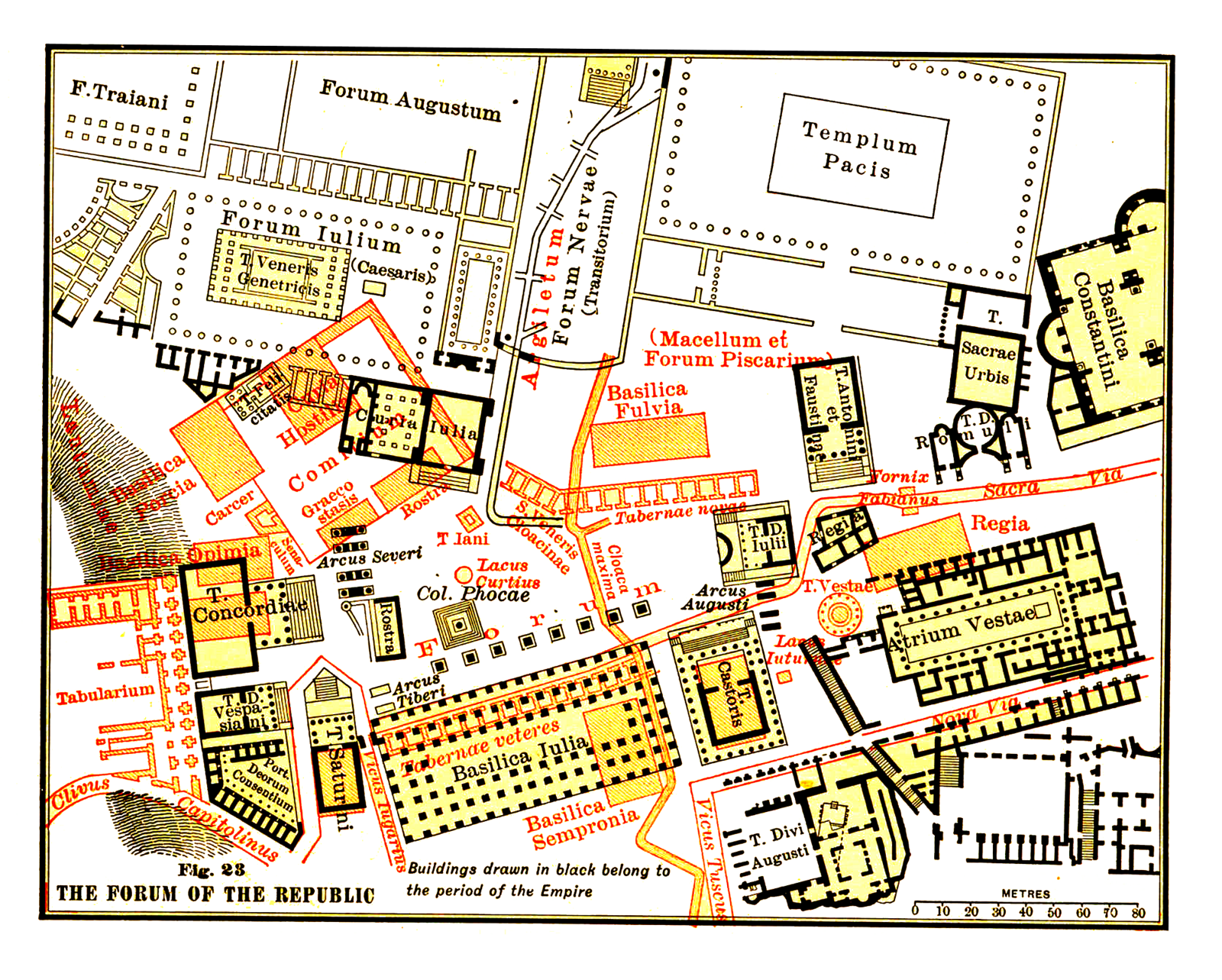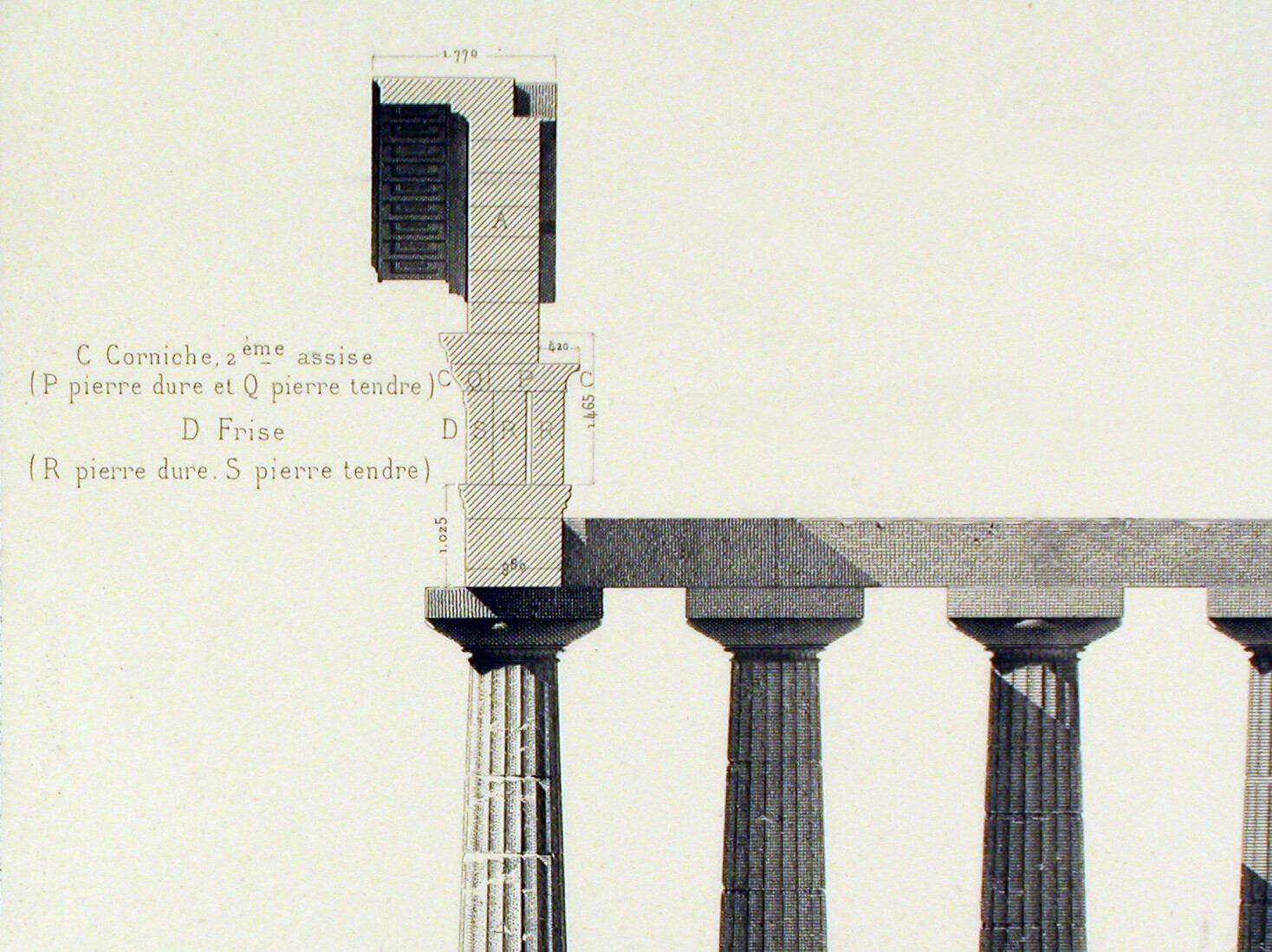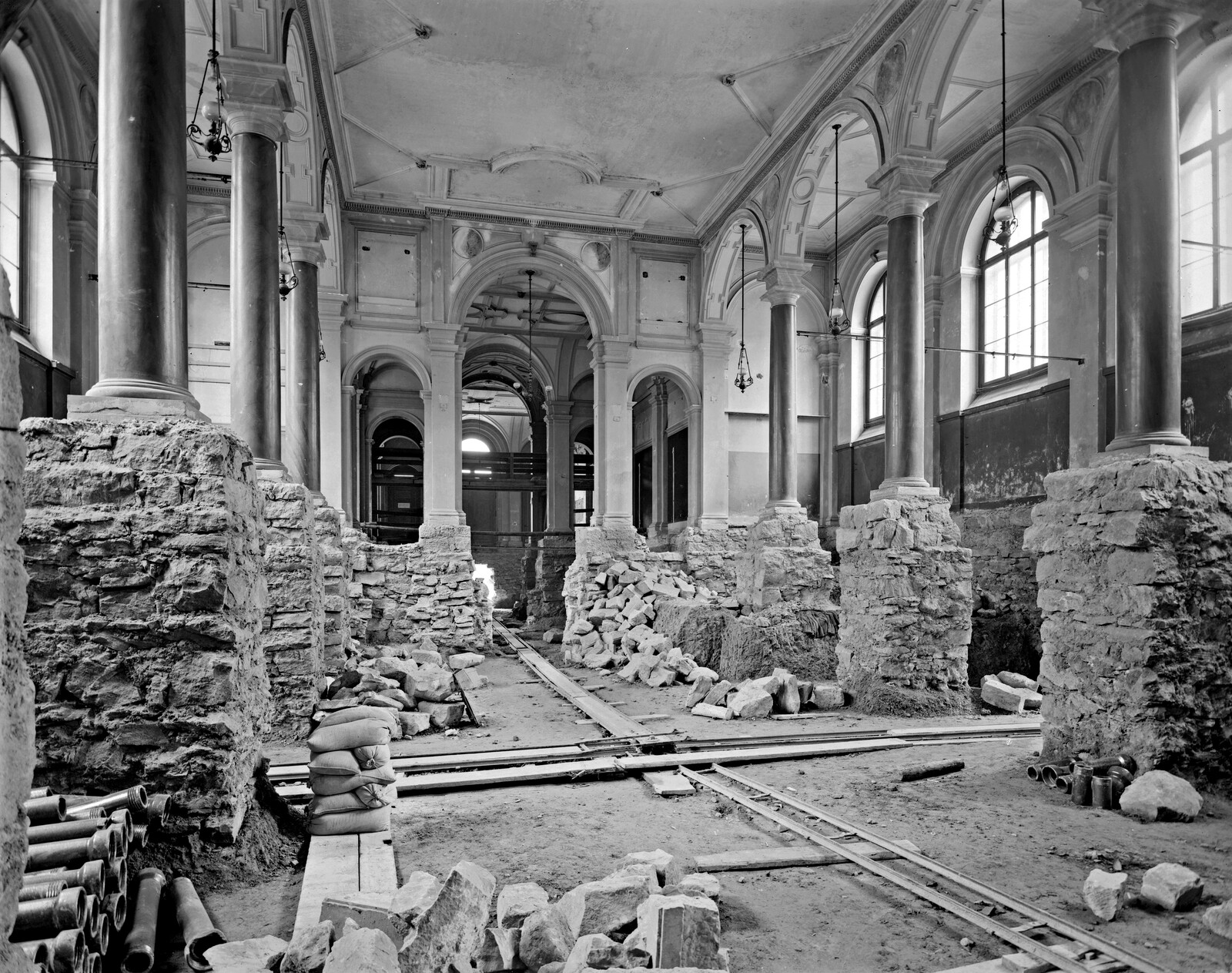“Elements” have always numbered among the fixed topoi of any conceptual preoccupation of architectural theory. They have long proven to be a central point of departure for inquiries into architectural practice. Leon Battista Alberti granted the “elements” of architecture a pivotal role in his third book, which he devoted to construction (1443–1452). Henry Wotton published his loose translation of Vitruvius under the title Elements of Architecture (1624). Four “elements” were the fundament on which Gottfried Semper first endeavored to formulate a global theory of architecture (1851). Josef Durm, in what was the most comprehensive manual of his day, summarized “constructions delimiting space” under the name “architectural elements” (1920). And it was under five points, if not elements, that Le Corbusier laid out his theory of modern architecture (1927). These texts as well as many others all aspire to scrutinize the complexity of architectural practice according to its contemporary logics, and in turn, to propose new models for it. Semper proposed his four elements to prompt a rethink of the Vitruvian architectural tradition and, against the backdrop of a newly accessible global architecture, forge it anew. Le Corbusier’s five points, for their part, constitute a radical attempt to come to terms with the functional, structural, and aesthetic repercussions of a novel material—reinforced concrete. This dual aspiration is architectural theory’s contribution to its time. Historically embedded, it fuses discourse that is concerned with the rules of the architectural discipline with cultural discourse on, and about architecture.
In light of these examples, it is curious to note that the 2014 Venice Biennale curatorial proposal, to exhibit the contemporary “elements” of architecture, has since then fallen almost completely out of architectural discourse and its debates. This may be due to how difficult it was, given the flood of artifacts, documents, graphics, and texts of greater or lesser originality, to gain an overview of the exhibition and a coherent definition of an “element.” This may also be due to the generic comments of the curator, who claimed to present a “selection of the most revealing, surprising, and unknown moments of a global history of elements” in a broad variety of exhibition formats, from archives, museums, and factories to laboratories, mock-ups, and simulations. The explanation proffered by the exhibition’s scientific director was even more vague, who—taking lead from Bruno Latour’s thesis on the transformation of a matter of fact into a matter of concern—compared architecture to a drone, and the exhibits on display to the remains of a fatal accident, which society should concern itself with. Depending on one’s viewpoint, either the drone analogy or the emphatic rejection of any kind of “architectural grammar” or classificatory system can be understood as a common excuse to declare, yet again, a fresh start for architecture.
The rapidly evaporating interest in elements may also be due to the place where they were exhibited: the Biennale, an institution victim of what Georg Franck originally described as the attention economy: where value accrues to whatever draws attention, not the other way around. For no sooner had questions about the fundamentals of architecture been put and the “call to order” sounded than were they swept aside by the various State of the Arts (Chicago, 2015), Reports (Venice, 2016), Forms of Form (Lisbon, 2016), or New Histories (Chicago, 2017). As unexpectedly as 2014’s theoretical proposition had come into play—positioning architecture, not architects, in the foreground—did the brief intermezzo cede to the compulsion of new institutions to place new authors and their various—innovative, social-reformist, formalist, or historically reflective—works on the market of attention. And so, discourse on “elements” dried up as fast as it had been hustled by novel commentaries to new heights.
Yet what would it mean to hazard reflections on architecture that are driven less by media or academic career logics than by architectural practice; not the ephemera of individual debate but rather the durability of architecture, which is to say, its materiality, constructs, or traces? And how could it be done?
One possible approach to mapping the contemporary elements of architecture might consist of, as was done in the Venice Biennale of 2014, simply laying them out. This appears most expedient, yet it is hardly conducive to superordinate statements on architecture. At best, it can lead to a brief summary of the present state of architecture, its processes of production, and types of usage thereof. Yet while trying to make sense of such an approach, one question repeatedly comes up: What is an element? Do the pipes in a suspended ceiling constitute an element, or just the suspended ceiling itself? And is an integrated toilet an element, or just the toilet bowl itself? If such a general layout seems unproductive, that is because the system fails to take into account of connections between elements, which are constitutive of anything and everything architectonic. But does this randomness then mean that architecture, on account of the complexity of its tasks and its increasingly specialized practitioners, has definitively taken leave from the realm of theory? Or could it mean that the striving for systematization must from now on be delegated to those outside the profession, who have in any case been accomplishing this feat for years already, independently of, and much more efficiently than architects? Home Depot, for instance, presents elements ranging from construction materials and components to tools, equipment, plants, and pre-fab houses in a precise, logistical order. Similarly, furniture stores are subdivided according to room type, from living room, to kitchen, to garden, each with its relevant fittings and furnishings. Even the construction industry, thanks to BIM, can accurately deduce, tabulate, and accordingly rate the economic value of any element, and public administrations have, we should not forget, long since specified their elements in line with legal criteria or norms.
Another approach to understanding the elements of architecture can be taken from the tradition of architectural manuals, in which constitutive elements of a space are followed by various openings for persons, goods and fluids which perforate the spatial boundaries, and finally, by those elements that serve as circulation within a building. Thus, after the chapters on floors, walls, and roofs come those on doors, windows, and balconies, and then stairs (both mechanical and traditional), elevators, and ramps. While the majority of elements can be classified within this order, others again fall outside it. Here too, the publication that accompanied the exhibition on Elements is exemplary. For while in the finest tradition of Albertinian architectural theory the column might justifiably be omitted by deeming it a section of the wall, the twentieth-century evolution and disintegration of the wall into layers has effectively rendered any distinction between it and the façade obsolete. Similarly, the balcony might easily be complemented by the loggia or portico, but it could also be dealt with in the section on doors. And then there are, of course, the inclusion of spaces that would not be qualified as elements at first glance. The corridor, for example, would have to be read quite literally as an unconventional departure from an order based all too narrowly on the established elements of architecture.
While with the first approach one risks becoming lost in a flood of information, norms, and either feasible or fictitious narratives, leaving one tempted to leave architecture in the hands of otherwise-proven experts and so definitively bid it farewell, the second approach chalks out a possible order—albeit one that repeatedly chafes at its exceptions. This second approach also seems to perpetuate certain traditional givens for no good reason, for instance, continuing to distinguish between apparatuses, building components, and spaces. Yet elements of architecture are not only concrete artifacts of stone or plaster, synthetic or natural materials, or a mixture thereof, but also—and always—devices that determine and qualify architectural space. Architectural elements neither lead an independent existence nor function solely according to their own inherent logic. Rather, they constitute a technical ensemble and must therefore be coordinated, not for reasons of compromise but rather, and more crucially, their simultaneity. This is as true of the reinforced concrete wall—that precise amalgam of steel and concrete, with the latter, of course, composed from gravel and cement in turn—as it is of the suspended ceiling comprised of ventilation ducts, lighting, and covering plates that must hang together. It hence goes without saying that a coherent architectural order can no longer be based solely on elements (for where does an element begin and end?), oriented around materials (for which category would composites fall?), or deduced from the application of a purely economic or logistical order (despite the fact that architecture can ultimately never evade or operate beyond this).
Instead, any elementary order of architecture should respond to the requirements of its praxis. At least three of these can be distinguished for today: those, such as pillars and floors, which serve to bear loads; those whose purpose is to provide shelter, from walls and ceilings to heating systems, insulation, cladding, and soundproofing materials; and those which serve purposes of circulation, like corridors, windows, toilets, doors, and ramps. Classification of this sort has the advantage of obviating the distinction between building technology and engineering, between material design and architecture, so that each of these might be considered not in terms of their isolated elemental existence, but rather their role in the overall structure. These three requirements—if there are only three—could in turn be further classified according to their compressive or tensile capacity, their acoustic, thermal, or insulating properties, or their ability to keep bodies in motion, to exchange air, water, and energy, and then further in terms of their diverse materiality. This perspective, which foregrounds the performative demands made of architecture, further implies that the common subtextual reading of architecture as a collage of elements must cede to that of an assemblage, and thereby regain its aesthetic—which is to say, mutually shared—quality.
History/Theory is a collaboration between the Institute for the History and Theory of Architecture (gta), ETH Zürich and e-flux Architecture.
Category
Subject
Translated from the German by Jill Denton.
History/Theory is a collaboration between the Institute for the History and Theory of Architecture (gta), ETH Zurich and e-flux Architecture.





















